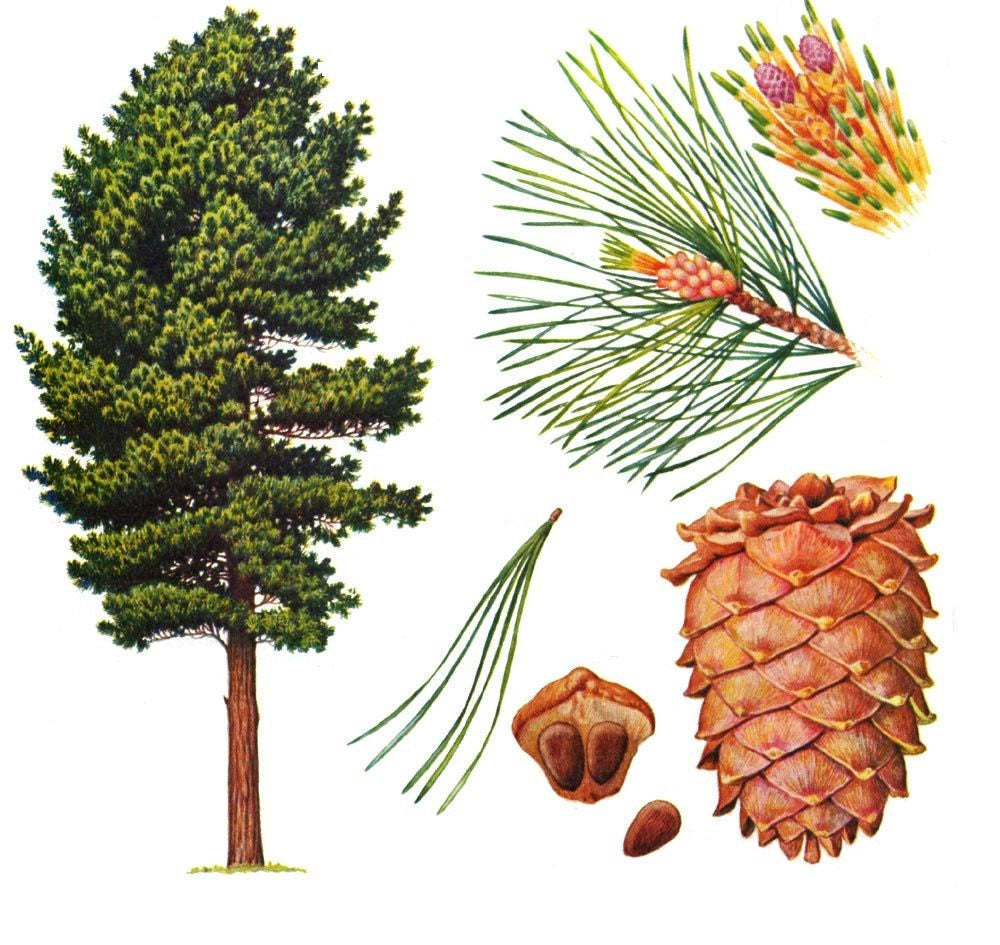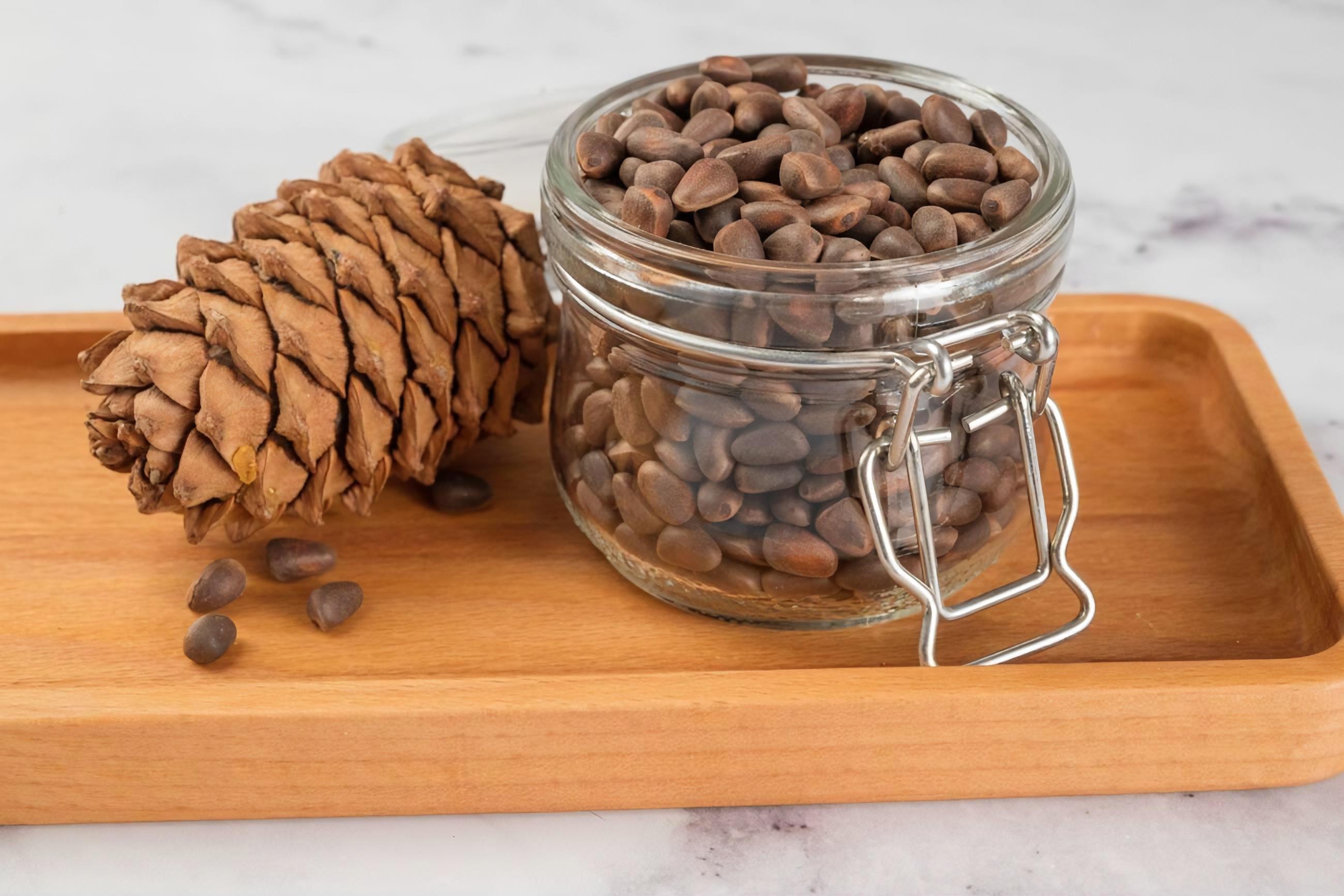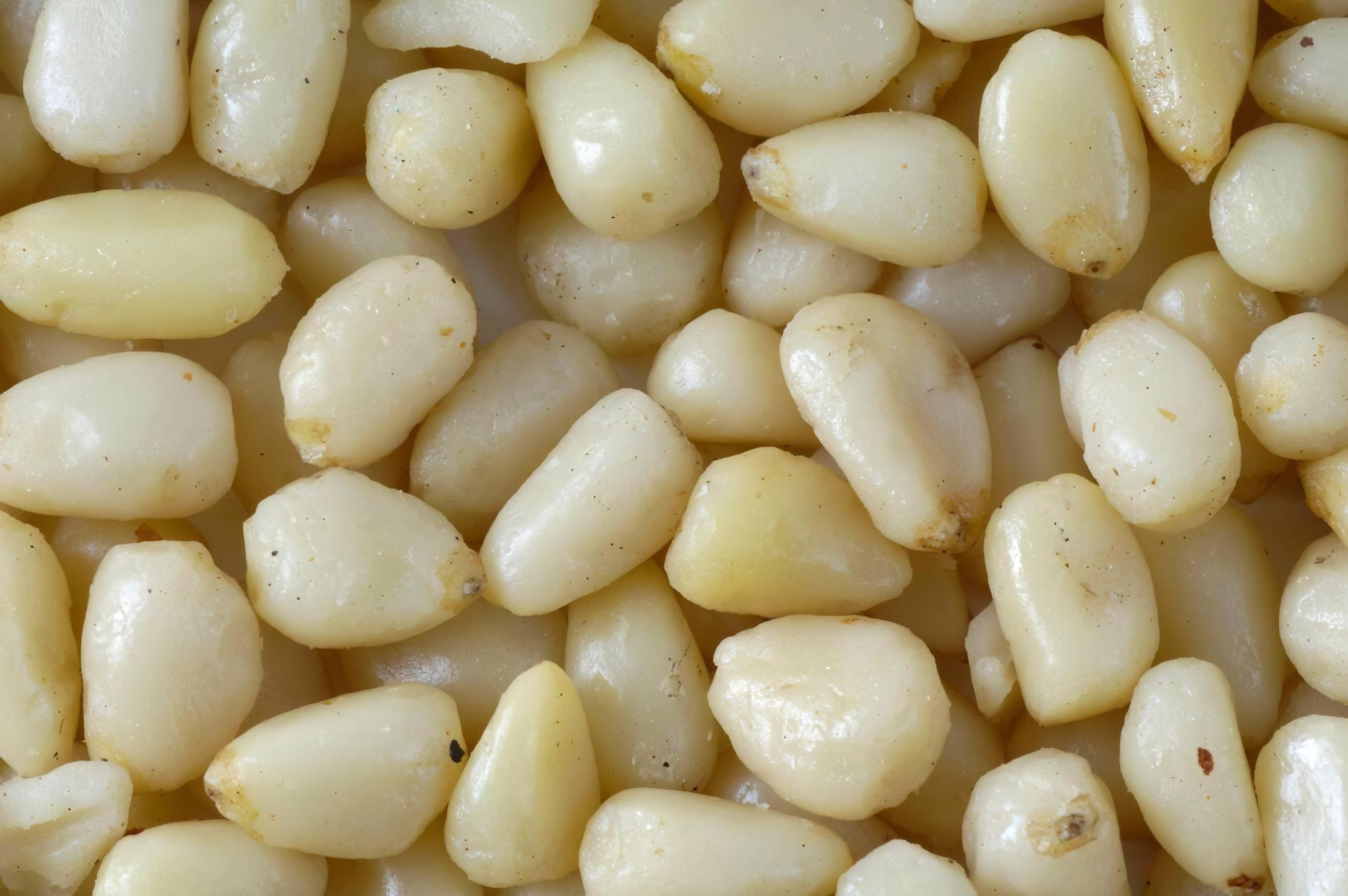Despite being botanically classified as a pine tree, Pinus sibirica has been called "cedar" (кедр) in Russia for centuries. This naming tradition reflects complex historical, cultural, and possibly even political factors rather than strict botanical classification.
The discrepancy between its common name in Russia and its scientific classification has created an enduring paradox that continues in contemporary works like Vladimir Megre's "Ringing Cedars of Russia" series.
Historical Origins of the "Cedar" Name in Russia
The association between Pinus sibirica and the name "cedar" in Russia dates back to the 17th-18th centuries (7)(11). According to historical accounts, including the Siberian Chronicle of Savva Yesipov from the 17th century, the tree was already referred to as "cedar": "...on this stone grew different trees: cedars and others..." (11)
This naming convention occurred despite the fact that true cedars (genus Cedrus) grow in completely different regions - primarily in the Mediterranean and Himalayan areas (13). True cedars include species like the Lebanese cedar, Atlas cedar, and Himalayan cedar, none of which are native to Siberia (15).
The Role of Peter the Great
Several historical accounts point to Tsar Peter I (Peter the Great) as playing a significant role in cementing the "cedar" name for this Siberian pine. After studying shipbuilding in Holland, Peter I observed that the Dutch used true cedar wood imported from North Africa (Atlas cedar) for their ships due to its resistance to rot, water damage, and termites (15).
Upon returning to Russia and seeking to build a powerful fleet, Peter reportedly sent expeditions to Siberia to find a similar tree. When they discovered Pinus sibirica, which had some comparable properties, Peter I allegedly issued a decree: "name this tree Siberian cedar" and forbade cutting them under threat of death (15). This royal endorsement likely formalized what may have been a pre-existing folk naming tradition.
This "marketing" rationale makes historical sense, as the wood from Pinus sibirica could be exported to European markets as "cedar," commanding higher prices for what was considered a strategic resource in shipbuilding (7)(15).
Alternative Theories About the Name's Origin
Several other explanations exist for how Pinus sibirica acquired its cedar moniker:
Religious and Cultural Connections
One theory connects the naming to Orthodox Christian traditions. Icons were traditionally painted on boards made of Lebanese cedar wood. As imported cedar became prohibitively expensive, Russian icon painters began using local pine wood with similar properties, and the name "cedar" transferred to this local substitute (9).
Linguistic Evolution
The name might have developed through linguistic simplification, where the Latin name "cedrus" was shortened to "cedar" in Russian usage (9). Another possibility is that the name came from Balkan peoples who adopted Orthodox Christianity and had true cedars growing nearby, with the name later transferring to the Russian context (9).
Ancient Roman Precedent
There's evidence of similar naming patterns occurring earlier in history. The alpine species Pinus cembra, closely related to Pinus sibirica, was known to ancient Romans as "cedar" (ceder) (14). This suggests a historical precedent for calling certain pine species "cedar" based on perceived similarities.
Local Terminology and Modern Understanding
Interestingly, in many local dialects of Siberia, Zabaykalye, Altai, and Primorye regions, a more botanically accurate term "kedrovnik" (кедровник) is used for Pinus sibirica (7)(16). While "kedrovnik" in standard Russian typically refers to a cedar forest, in these dialects it consistently applies to individual trees, particularly when discussing them as sources of pine nuts (16).
Over time, this usage has made its way into literary and scientific language, though it hasn't become universally adopted (16). This suggests an ongoing tension between folk taxonomy and scientific classification that has never been fully resolved.
The Special Status of the "Siberian Cedar" in Russian Culture
The mistaken identity has not diminished the tree's cultural significance. Pinus sibirica holds a special place in Russian culture and is sometimes referred to as the "national tree" (3)(6). It has earned poetic nicknames like "tree-cow," "tree-mother," "Siberian giant," "cherished tree," "tsar of the taiga," and "miracle tree" (6). Russian writer D.N. Mamin-Sibiryak admiringly called them "boyars in velvet coats" (6).
The tree is celebrated for its longevity (living 500-850 years), its nutritious pine nuts (often called "cedar nuts"), and its medicinal properties (2)(3)(8). In modern Russia, September 9th is celebrated as "Cedar Day" in Krasnoyarsk territory, deliberately chosen because the tree's seeds ripen in early September (6).
The Persistence in Literature: Vladimir Megre and the Ringing Cedars
Vladimir Megre's "Ringing Cedars" series continues this naming tradition, referring to these trees as "cedars" rather than pines. This reflects the deep-rooted cultural identification Russians have with these trees as "cedars," regardless of botanical classification (3). The spiritual and cultural significance attributed to these trees in Megre's work builds upon centuries of reverence for these trees in Russian tradition.
Scientific Classification vs. Cultural Naming
From a strict botanical perspective, Pinus sibirica belongs to:
- Kingdom: Plantae
- Division: Pinophyta
- Class: Pinopsida
- Order: Pinales
- Family: Pinaceae
- Genus: Pinus (Pine)
- Subgenus: P. subg. Strobus
- Section: P. sect. Quinquefoliae
- Subsection: P. subsect. Strobus
- Species: P. sibirica (2)
It is closely related to other "cedar pines" such as the Korean cedar pine (P. koraiensis), European cedar pine (P. cembra), and dwarf cedar or cedar elfin (P. pumila) (11)(13)(14).
Conclusion: A Name Embedded in Cultural Identity
The continued use of "cedar" for Pinus sibirica in Russia represents a fascinating case where cultural naming traditions have persisted despite scientific classification. This naming convention, possibly formalized by Peter the Great for practical economic reasons, has become deeply embedded in Russian cultural identity and relationship with this tree.
Whether called by its scientific name, Pinus sibirica, or its traditional Russian name, "Siberian cedar," this majestic tree continues to hold special status in Russian culture, economy, and spirituality - including in contemporary works like Megre's "Ringing Cedars" series. The naming paradox serves as a reminder that scientific taxonomy and cultural classification systems can coexist, each serving different but equally valid purposes.
References
- https://www.conifers.org/pi/Pinus_sibirica.php
- https://en.wikipedia.org/wiki/Pinus_sibirica
- https://www.ringingcedarsofrussia.org/articles/siberian-cedar/tree-benefits.php
- https://naturalalchemy.com.au/product/siberian-cedar-pinus-sibirica/
- https://otvet.mail.ru/question/95257567
- https://ostrovlib.ru/upload/book/kedr.pdf
- https://dic.academic.ru/dic.nsf/ruwiki/5526
- https://www.ferwer.com/lexicon/substance/siberian-cedar-pinus-sibirica
- https://roskedr.ru/o_nazvanii_kedr.html
- https://www.sciencedirect.com/topics/agricultural-and-biological-sciences/pinus-sibirica
- https://ru.wikipedia.org/wiki/%D0%A1%D0%BE%D1%81%D0%BD%D0%B0_%D1%81%D0%B8%D0%B1%D0%B8%D1%80%D1%81%D0%BA%D0%B0%D1%8F_%D0%BA%D0%B5%D0%B4%D1%80%D0%BE%D0%B2%D0%B0%D1%8F
- https://oreshka-seeds.com/seedsofconiferous/tproduct/163003515-838739012020-cedar-sibirica-20-pcs-100-pcs-fresh-seed
- https://www.ogorod.ru/ru/outdoor/coniferous/2784/Sibirskaja-sosna-ili-kedr.htm
- https://sibflavor.com/10-facts-about-siberian-pine
- https://prolisok.com.ua/ru/tsikavo-znati/shcho-take-kedr
- https://ru.wikipedia.org/wiki/%D0%9A%D0%B5%D0%B4%D1%80%D0%BE%D0%B2%D1%8B%D0%B5_%D1%81%D0%BE%D1%81%D0%BD%D1%8B
- https://deodar-seeds.com/buy-coniferous-seeds/tproduct/673195798-266471634882-siberian-cedar-seeds-pinus-sibirica-sibe
- https://www.ringingcedarsofrussia.org/articles/articles_siberian_cedars.php
- https://www.shellingmachine.com/application/Russian-pine-nuts-processing-industry.html
- http://thunderbaypermaculture.blogspot.com/2018/03/siberian-pines.html
- https://pubmed.ncbi.nlm.nih.gov/25641836/
- https://bearloghomes.ru/en/eabout-us/en-why-cedar
- https://stock.adobe.com/search?k=%22siberian+cedar+pine%22
- https://www.cabidigitallibrary.org/doi/full/10.1079/cabicompendium.41705
- https://ecominded.net/cedar-products/natural-teeth-care
- https://davisla.wordpress.com/category/siberian-cedar-pine/
- https://www.shutterstock.com/search/siberian-cedar-pine
- https://apothecarysgarden.com/products/siberian-cedar-resin-pinus-siberica-fresh-earthy-musky-for-medicine-incense-perfume
- http://kedr.forest.ru/pinus.html
- https://derevovdom.ru/materials/sibirsky-kedr
- https://askkirov.ru/stati/kedr-ili-sosna/
- https://ru.wikipedia.org/wiki/%D0%9A%D0%B5%D0%B4%D1%80
- https://roskedr.ru/sibirskii_kedr.html
- https://roskedr.ru/istoria_kedra.html
- http://www.kuz-alatau.ru/news/novosti-zapovednika/1245-sibirskij-kedr.html
- https://www.booksite.ru/fulltext/rusles/ignkedr/text.pdf
- https://zlatpitomnik.ru/sosna-sibirskaja-kedrovaja-oks
- https://richwood.ru/enciklopediya-drevesiny/kedr/
- https://conifercollection.ru/pinus/tproduct/809206469-330375599637-kedr-sibirskii-sibirica
- https://prirodnadzor.admhmao.ru/upload/iblock/ae3/Sibirskiy-kedr-_-natsionalnaya-gordost-Rossii_-Kaipov-V.I._-g.Megion-.pdf






Leave a comment
This site is protected by hCaptcha and the hCaptcha Privacy Policy and Terms of Service apply.